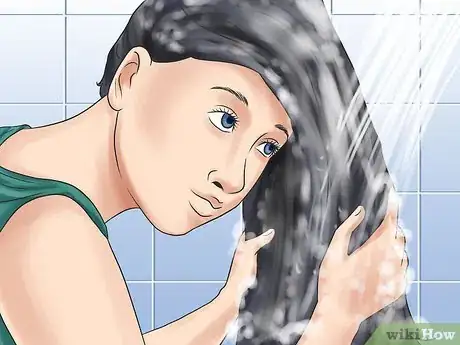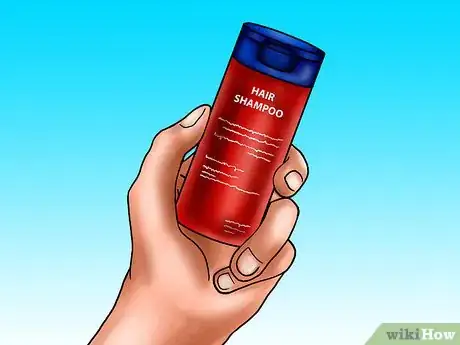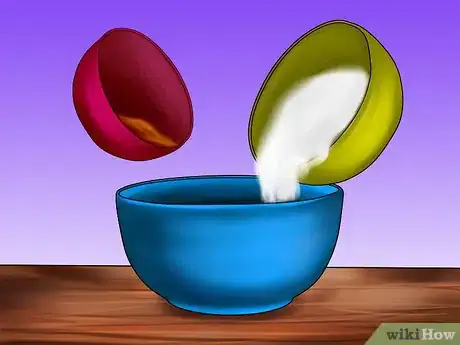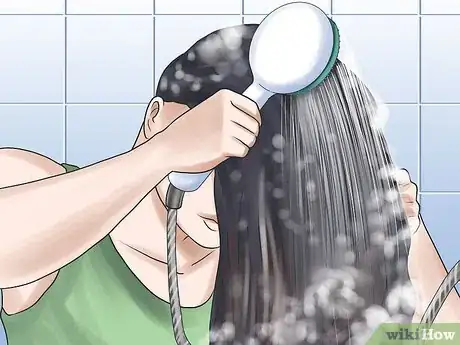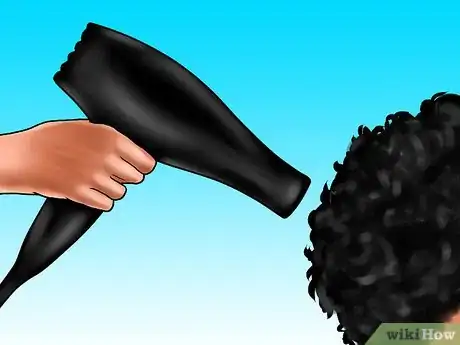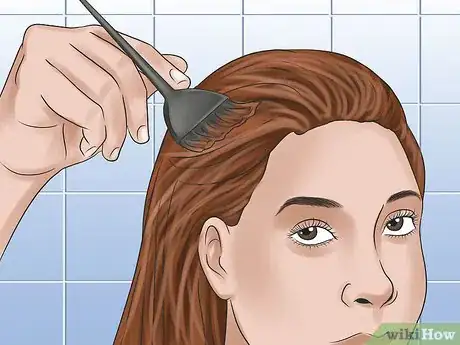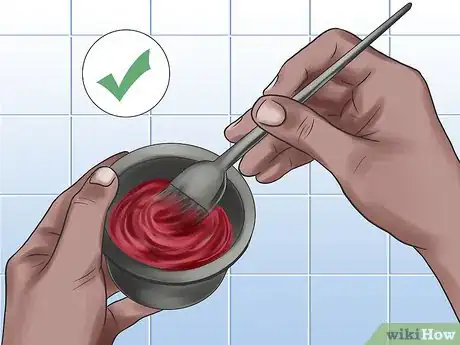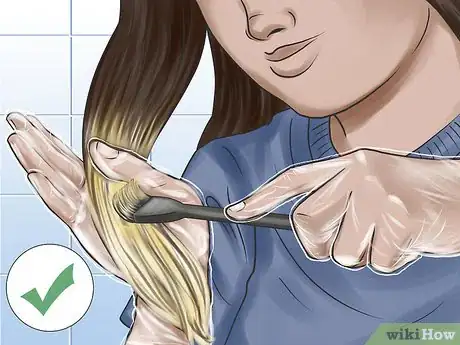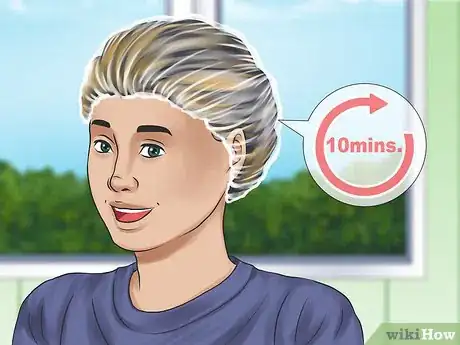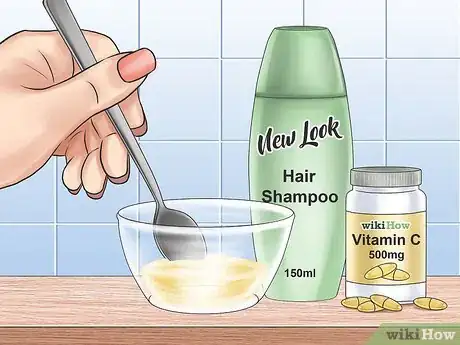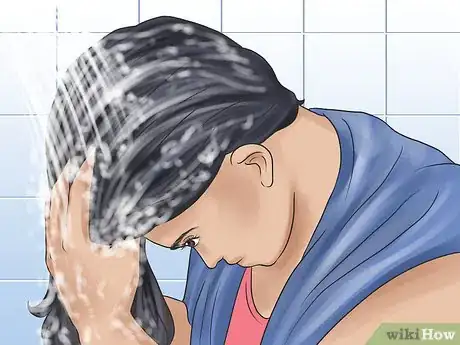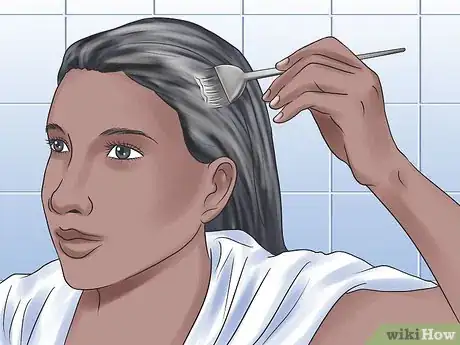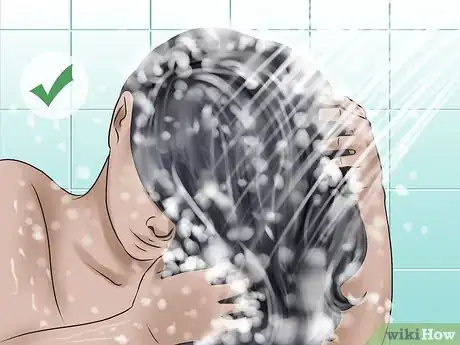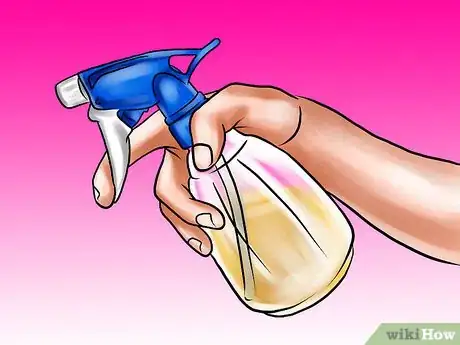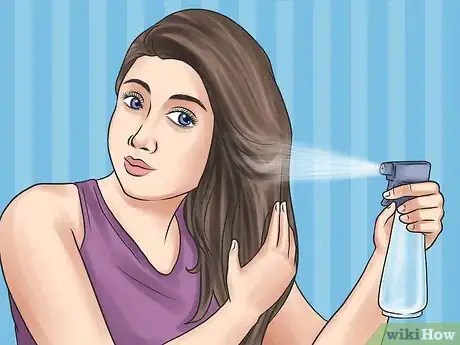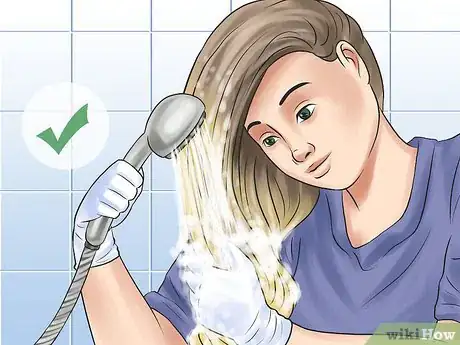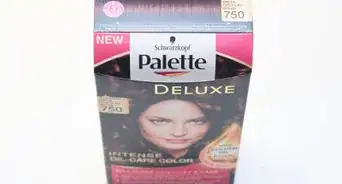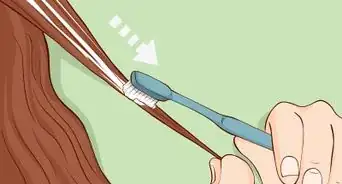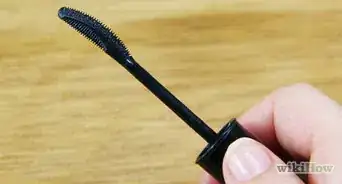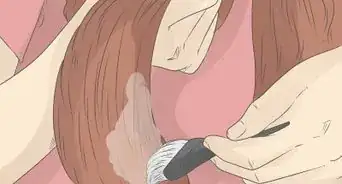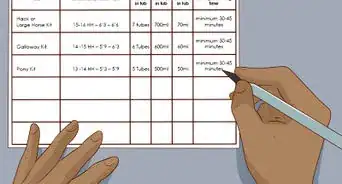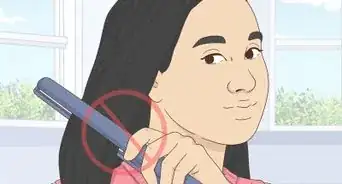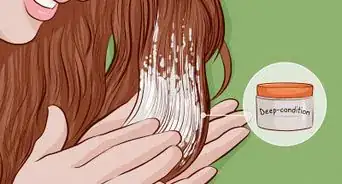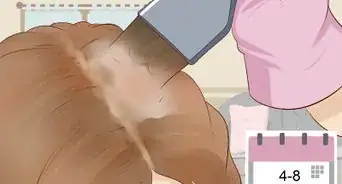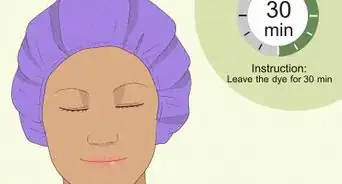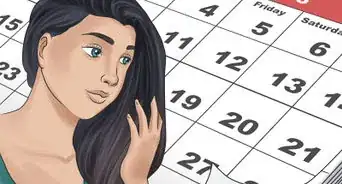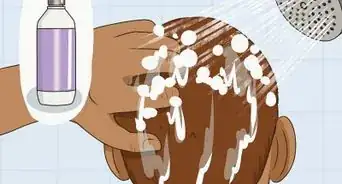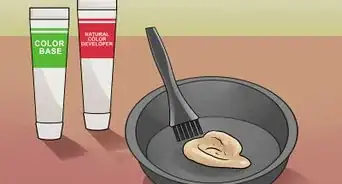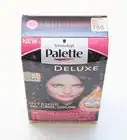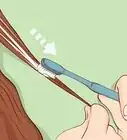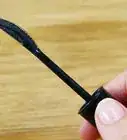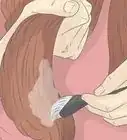This article was co-authored by Michael Van den Abbeel. Michael Van den Abbeel is a Professional Hair Stylist and the Owner of Mosaic Hair Studio and Blowout Bar in Orlando, Florida. He has been cutting, styling, and coloring hair for over 17 years. Michael loves showing his clients how to wash and wear their hair easily and effortlessly. Mosaic Hair Studio and Blowout Bar is recognized as a Diamond Top Tier level Wella salon.
There are 8 references cited in this article, which can be found at the bottom of the page.
This article has been viewed 1,373,020 times.
Maintaining hair color can be tough on a budget. If you’ve recently had your hair dyed but it wound up too dark, there are a few things you can try to save yourself money on another salon trip. Limited lightening is possible, but don’t set your hopes too high—if you find your efforts unsuccessful (and you can’t live with the hair color as-is) you might have to suck it up and head back to the professionals.
Steps
Intervening Immediately After Your Dye Job
-
1Rinse your hair with hot water.[1] The heat will open up the cuticles, allowing more of the dye to be stripped out. Thoroughly saturate your hair, in either the shower or over the sink.
-
2Wash with a non-color-safe clarifying shampoo. The shampoo should be used immediately after you undergo your unsatisfactory coloring, and should strip some of the new color from your hair.[2] Squeeze a dime-sized amount (or as much as is recommended by the product’s instructions) into your palm, and rub it into the dyed, wet hair. While you shouldn’t be rough with it, more effort should be exerted than a usual shampoo session's “gentle massage.”
- There are myriad, appropriate brands available to purchase wherever you normally get shampoo. Just make sure the clarifying shampoo you select is non-color safe.
Advertisement -
3Condition afterward. After scrubbing your hair with the clarifying shampoo, you’ll want to mitigate the harsh cleansing effect on your hair by moisturizing it.[3] Condition liberally: squeeze a quarter-sized amount into your hands, massage it into your hair from root to tip, then rinse it out.
- When possible, it’s advised that you wait a few days to allow your hair time to recuperate from the chemical processes used to dye it before attempting to scrub out the dye. If it has to come out as soon as possible, though, ensure you offset the damage as much as possible with conditioning.
Mixing Baking Soda and Shampoo
-
1Combine 2 cups of baking soda and 1/4 cup of clarifying shampoo in a non-metal bowl.[4] The alkalinity of the baking soda works to open your hair up, letting the clarifying shampoo better strip its color.[5] Use a whisk to work the baking soda and shampoo together.
- You might want to bump the baking soda up to 3 cups if you have longer than shoulder-length hair.
-
2Wet your hair with hot water. Heat, in conjunction with the baking soda, will greatly open the cuticles of your hair. Do not use cool water, because it will close the cuticle.
-
3Rub it into damp hair. You can use your hands, or a spatula. Thoroughly cover the dyed hair, so that you don’t end up with mis-matched color.
- Take care not to get the mixture in your eyes! You might want to use a towel or cloth around your head, to keep the mixture from dripping down toward your face.
-
4Wash it out after 5-15 minutes. The duration will depend on how much color you’re looking to remove. Leave it in for longer for more drastic results, but no longer than the recommended 15 minutes. Multiple batches is recommended if 15 minutes doesn’t prove sufficient.
-
5Blow-dry part of your hair to check the color. As you might need to wash it again—and heat will cause undue strain on your hair—you should only dry a small section of your hair. If the color looks good, then great! If not, you’ll want to mix another batch of baking soda and shampoo and get ready for round 2.
-
6Make another batch, if necessary. If your hair hasn’t sufficiently lightened, you can re-apply for better results. A more powerful mixture can be concocted by adding a tablespoon of hair bleach powder to the original recipe. When handling bleach, be sure to wear gloves.
- After you’ve finished, avoid any styling that uses heat for a day or two. Both dyeing and “un”dyeing your hair take a toll.
Applying a Soap Cap
-
1Mix bleach, shampoo, and developer. In a clean bowl, put in equal amounts of bleach, shampoo, and a creme developer. Mix them together.[6]
- You can get developer at a beauty store, drug store, or wherever you purchased your hair dye.
-
2Apply the mixture to damp hair. Get your hair wet, and towel dry it lightly before putting on the mixture. Put on gloves before handling the mixture. Starting at the roots, work the mixture down your hair.[7]
-
3Cover with a shower cap. Leave the mixture on your hair under a shower cap for about ten minutes. Do not leave it on for too long or you may damage your hair.[8]
- If you don't have a shower cap, you can also cover your hair with plastic wrap.
-
4Rinse out afterwards. Use cool water to rinse out the soap cap. Condition your hair afterwards to prevent breakage and damage. You may want to apply a deep conditioning hair mask.[9]
Making a Vitamin C Paste
-
1Crush 15-20 tablets of vitamin C in a bowl.[10] You can use a mortar and pestle, or any blunt instrument which won’t damage your bowl.
-
2Add some anti-dandruff shampoo to the crushed tablets. A small amount will work, enough to make an effective paste with the powder. Combine the two ingredients with a whisk.
-
3Dampen your hair with hot water. The heat will open up the pores on your hair, which will let your mixture better sap the unwanted color.
-
4Spread the mixture into your hair. You can apply it with your hands. Cover the entire affected area; if you fail to apply it evenly, you might wind up with an interesting pattern in your hair.
-
5Leave it in for an hour. Cover your hair with a shower cap if necessary. After an hour has passed, rinse the paste from your hair with cool water.
- Moisturize thoroughly with conditioner if your hair feels dry after you’ve washed the paste out.
Spraying with Peroxide
-
1Pour hydrogen peroxide into a spray bottle. For best results, you’ll want to be able to apply the peroxide to your hair via spray bottle. Pouring it directly from the bottle over your head will leave you to guess as to how much of your hair has been affected.
- Peroxide is definitely the least predictable, and likely the least optimal option available to you. It doesn’t work against the dye and chemicals already in your hair, but instead adds another one. Use it with caution.
-
2Spray the peroxide evenly onto your hair. Use the “mister” setting, if you have the option, as opposed to the “stream” setting. Spray the hair you wish to lighten from a distance of about a foot away, using a hand or cloth to cover your eyes.
- Peroxide is safe to get on your skin, but can cause burning in your eyes. If you get some in them, flush them with cool water.
- Going outside in the sun can cause further lightening, but can also dry your hair out. Be aware of the effect sunlight will have if you choose to go outside with the peroxide in your hair.
- Use pins or clips to arrange your hair, so that you only spray the hair you want to.
-
3Rinse it out with cold water after 30 minutes.[11] Any longer risks your hair becoming overly dry, or overly bleached. Excessive peroxide use can easily lead to a brassy, orangey hair coloration.
- A deep conditioning is recommended if your hair feels dry after the peroxide treatment.
Expert Q&A
Did you know you can get premium answers for this article?
Unlock premium answers by supporting wikiHow
-
QuestionHow can you lighten your hair naturally?
 Laura MartinLaura Martin is a Licensed Cosmetologist in Georgia. She has been a hair stylist since 2007 and a cosmetology teacher since 2013.
Laura MartinLaura Martin is a Licensed Cosmetologist in Georgia. She has been a hair stylist since 2007 and a cosmetology teacher since 2013.
Licensed Cosmetologist
-
QuestionCan you lighten your hair with box color?
 Laura MartinLaura Martin is a Licensed Cosmetologist in Georgia. She has been a hair stylist since 2007 and a cosmetology teacher since 2013.
Laura MartinLaura Martin is a Licensed Cosmetologist in Georgia. She has been a hair stylist since 2007 and a cosmetology teacher since 2013.
Licensed Cosmetologist
-
QuestionCan you use toner on dark hair?
 Laura MartinLaura Martin is a Licensed Cosmetologist in Georgia. She has been a hair stylist since 2007 and a cosmetology teacher since 2013.
Laura MartinLaura Martin is a Licensed Cosmetologist in Georgia. She has been a hair stylist since 2007 and a cosmetology teacher since 2013.
Licensed Cosmetologist
References
- ↑ http://www.hairboutique.com/ask-karen_p/index.php/color-correction-tips/
- ↑ http://www.md-health.com/Lightening-Dark-Brown-Hair-Dye.html
- ↑ Michael Van den Abbeel. Professional Hair Stylist. Expert Interview. 7 January 2019.
- ↑ http://www.xovain.com/hair/how-to-fix-hair-color-you-hate
- ↑ http://www.md-health.com/Drinking-Baking-Soda.html
- ↑ https://bellatory.com/hair/How-to-dye-your-hair-blonde-without-bleach
- ↑ https://bellatory.com/hair/How-to-dye-your-hair-blonde-without-bleach
- ↑ https://www.haircrazy.com/articles/beginner-guides/bleach-bathing/
- ↑ https://bellatory.com/hair/How-to-dye-your-hair-blonde-without-bleach
About This Article
To lighten dyed hair immediately after dyeing, take a hot shower and wash your hair with a non-color-safe clarifying shampoo. The hot water will open your hair cuticles and help to release the dye. After you've washed your hair, condition it thoroughly to avoid over-drying. If you are wanting to lighten dye that's been in your hair for a while, mix together baking soda and clarifying shampoo. Apply this mixture to your damp hair, letting it sit for 5-15 minutes before rinsing it out. For more ways to lighten dyed hair from our Cosmetologist reviewer, read on!
